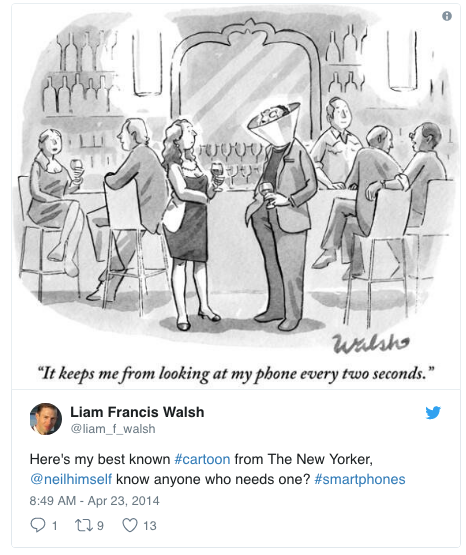How to Use Your Core Values to Inspire, Retain, and Energize Your Team
For the last few decades, but especially so in recent years, people are seeking out more than just an income from their place of employment. More...


I am worried. As I wrote earlier, part of creating a persuasive change message is to document and describe the problem before offering a solution built on shared values. My fear is that the blistering acceleration of focus scarcity, or attention deficit if you will, may soon make effective mission-driven marketing all but impossible.
Focus matters for learning and action. In Daniel Goleman’s book, Focus: The Hidden Driver of Excellence, he explores the power of attention. “Attention works much like a muscle,” he writes, “use it poorly and it can wither; work it well and it grows.”
Goleman describes three kinds of focus.
“Inner focus attunes us to our intuitions, guiding values, and better decisions. Other focus smooths our connections to the people in our lives. And outer focus lets us navigate in the larger world. A (person) tuned out of his internal world will be rudderless; one blind to the world of others will be clueless; those indifferent to the larger systems within which they operate will be blindsided.
How we focus our attention shapes what we are able to see. To be effective, I believe mission-driven marketing needs marketers and their audiences to have the capacity to apply all three kinds of focus: inner values, connections to others, and systems of the outer world.
Economist Herbert Simon first noted, “A wealth of information creates a poverty of attention.” Goleman builds the arguement that despite the time savings of everything being only a click away, our attention span is suffering.
An eighth-grade teacher tells me that for many years she has had successive classes of students read the same book, Edith Hamilton’s Mythology. Her students have loved it— until five years or so ago. “I started to see kids not so excited— even high-achieving groups could not get engaged with it,” she told me. “They say the reading is too hard; the sentences are too complicated; it takes a long time to read a page.”
She wonders if perhaps her students’ ability to read has been somehow compromised by the short, choppy messages they get in texts. One student confessed he’d spent two thousand hours in the last year playing video games. She adds, “It’s hard to teach comma rules when you are competing with World of WarCraft.”
I have touched before on the topic of how digital devices and other technology changes affect our brains and how we think, as well as my own technique for taking a weekly digital retreat to quiet the brain and adapt to the changes.
But we continually fight distractions. Headphones on as we work, televisions on during supper, text messages, emails, phone calls, app notifications … we see it every day — which is the truth behind a favorite (and popular) cartoon in The New Yorker by Liam Francis Walsh.

Goleman points to some of the compounding implications of our modern world.
“The onslaught of incoming data leads to sloppy shortcuts, like triaging email by heading, skipping much of voice mails, skimming messages and memos. It’s not just that we’ve developed habits of attention that make us less effective, but that the weight of messages leaves us too little time simply to reflect on what they really mean.
And Goleman notes that, no surprise, we learn best with focused attention.
“As we focus on what we are learning, the brain maps that information on what we already know, making new neural connections. If you and a small toddler share attention toward something as you name it, the toddler learns that name; if her focus wanders as you say it, she won’t.
“When our mind wanders off, our brain activates a host of brain circuits that chatter about things that have nothing to do with what we’re trying to learn. Lacking focus, we store no crisp memory of what we’re learning.
Goleman goes on to discuss how we connect what we read to our mental models (or frames), which is the heart of learning.
“As we read a book, a blog, or any narrative, our mind constructs a mental model that lets us make sense of what we are reading and connects it to the universe of such models we already hold that bear on the same topic. If we can’t focus we’ll have more holes in our understanding.
“Holes in our understanding” are not a good thing. Marketing for nonprofits, public agencies and mission-driven companies tends to be complex and require more information and education than a simple consumer product. So, what’s a mission-driven marketer to do after nurturing your own attention span?
I’m beginning to think that we need to focus on the strategy and channel implications for reaching increasingly distracted audiences with a change message. Two quick examples:
Over the next few months, I’ll be noodling on the implications of attention poverty for mission driven marketers (and A/B testing various new strategies). I’d love to hear your thoughts on the rising challenge.
“Focus: the Hidden Driver of Excellence,” Daniel Goleman Talks at Google (YouTube)
photo “End of the Tunnel” CC via flickr: innoxiuss
Editor's note: Originally published September 2014, updated December 26, 2017.
The Change Conversations blog is where changemakers find inspiration and insights on the power of mission-driven communication to create the change you want to see.
© 2009- to present, Marketing Partners, Inc. Content on the Change Conversations blog is licensed under a Creative Commons Attribution-Noncommercial-NoDerivs 3.0 United States License to share as much as you like. Please attribute to Change Conversations and link to ChangeConversations.
Creative Commons License may not apply to images used within posts and pages on this website. See hover-over or links for attribution associated with each image and licensing information.

For the last few decades, but especially so in recent years, people are seeking out more than just an income from their place of employment. More...

You know nonprofit organizations need websites just as small businesses do, but you may be surprised to learn nonprofit sites can be more complex and...

In today’s rapidly evolving media landscape, understanding where and how your story is told isn’t just strategic—it’s essential. How you communicate...